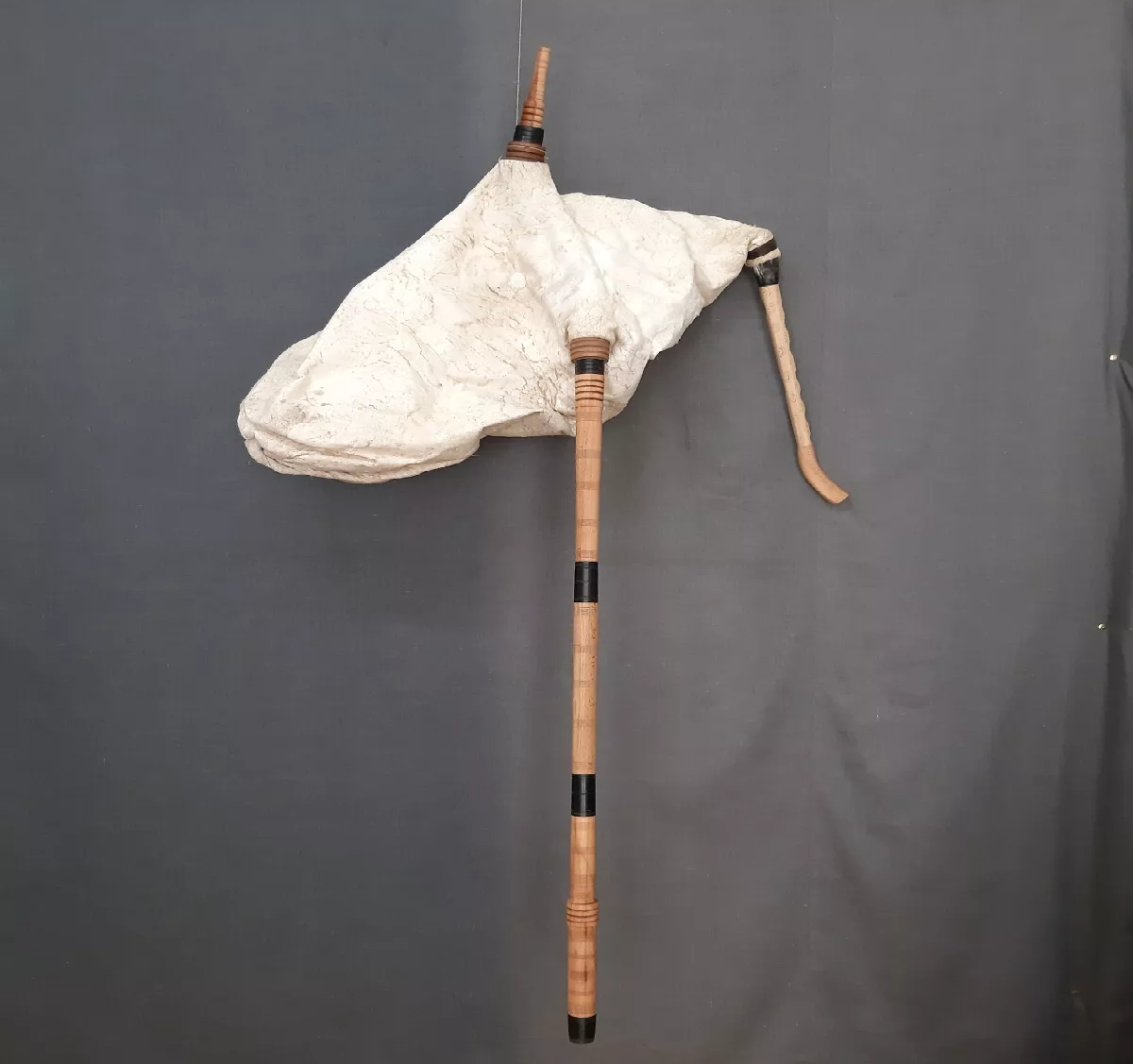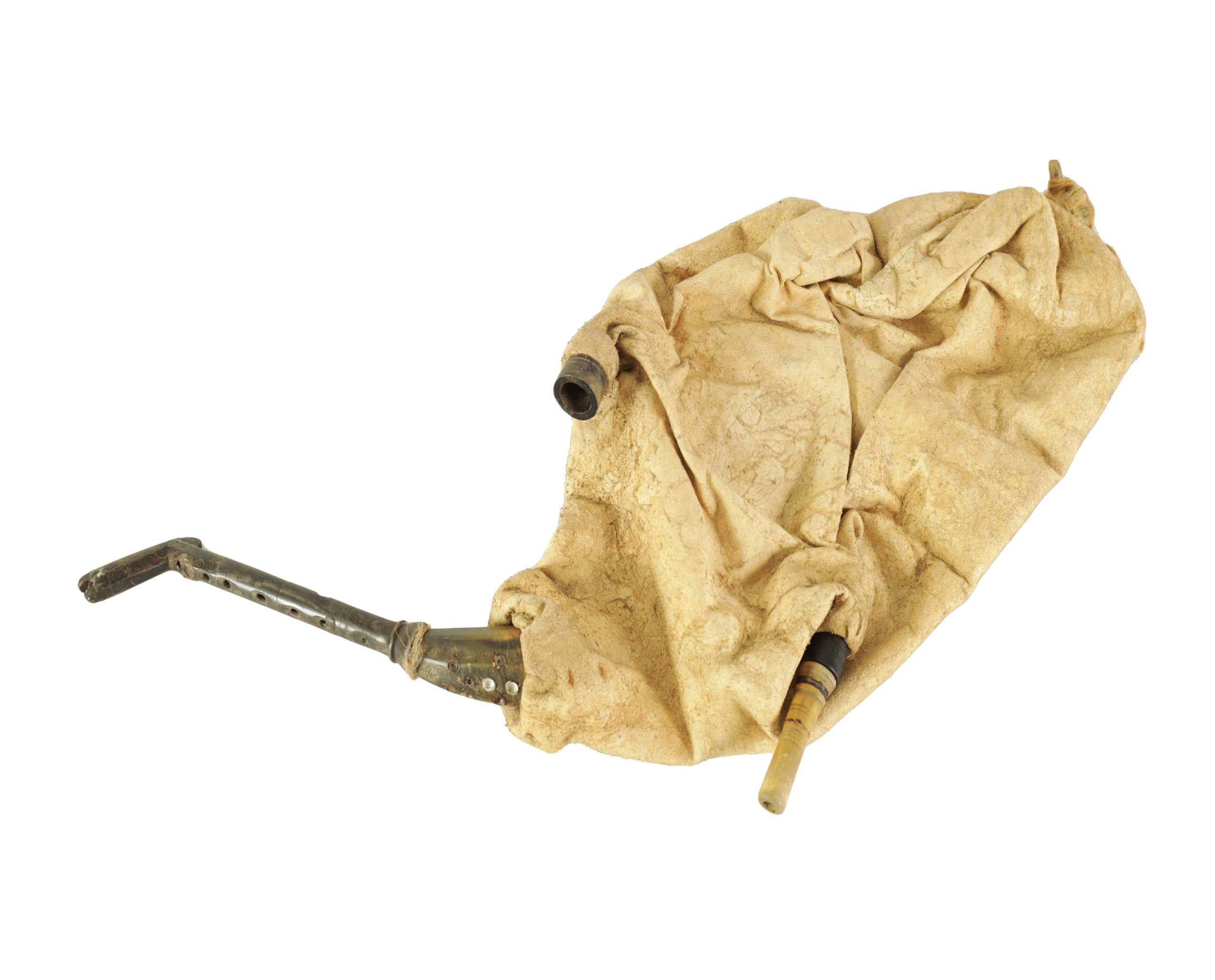Gaida
Woodwinds
Europe
Between 0 and 1000 AD
Video
The Gaida is a traditional bagpipe widely used in the Balkans, particularly in countries such as Bulgaria, Greece, North Macedonia, Albania, Serbia, and Turkey. It is a key component of folk music in these regions, with a history spanning centuries. The instrument is characterized by its distinctive drone sound and melodic capabilities, making it an essential element in traditional and contemporary folk performances.
The Gaida belongs to the aerophone family, specifically a bagpipe. It produces sound through air pressure supplied by a bag, which acts as a reservoir for continuous airflow. Like other bagpipes, it consists of three main parts: the chanter (melody pipe), the drone pipe, and the bag. The Gaida is typically mouth-blown, though some variations may use bellows.
Historical Background
The origins of the Gaida trace back to ancient times, with historical evidence suggesting it was played in the Balkans, Anatolia, and parts of the Middle East as early as the first millennium BCE. Some researchers believe it evolved from early reed instruments used in ancient civilizations such as Mesopotamia and Greece. Ancient depictions on Thracian artifacts and Greek pottery indicate that bagpipes were known in Europe by at least the 5th century BCE. The Gaida, as a distinct instrument, became widely recognized in medieval times (9th-14th century CE) across southeastern Europe. It remained a central part of rural life, used for social gatherings, celebrations, and pastoral music.
Construction and Materials
The Gaida consists of several essential components:
Bag (Meh) – Traditionally made from goat or sheep skin, the bag serves as an air reservoir. The skin is treated and sewn to create an airtight chamber that maintains air pressure while the musician plays.
Chanter (Gaidanitsa) – The melodic pipe, often crafted from wood (such as boxwood or plum), features finger holes that allow the player to produce melodies. The chanter’s reed, made from cane, is crucial in generating the distinct tone of the Gaida.
Drone Pipe (Bourdon or Ruchilo) – This longer pipe produces a continuous drone sound, giving the Gaida its characteristic resonance. The drone is typically tuned to a specific pitch, harmonizing with the melody played on the chanter.
Blowpipe (Duhalo) – Used to inflate the bag, the blowpipe features a simple one-way valve that prevents air from escaping as the musician breathes into it.
Reeds – Both the chanter and drone contain single or double reeds, typically fashioned from cane, which vibrate to produce sound.
Playing Technique
Playing the Gaida requires skillful breath control and finger dexterity. The musician inflates the bag through the blowpipe and maintains steady air pressure by squeezing the bag with their arm. The chanter is played using a combination of open and closed fingering techniques, which vary by regional tradition. Ornamentation, such as trills, mordents, and grace notes, adds expressiveness to the melodies. The drone pipe sustains a constant note, enriching the overall sound texture.
Regional Variations
Different countries and regions have developed unique variations of the Gaida, each with distinct characteristics:
Bulgarian Gaida – Features two primary types: the Kaba Gaida (low-pitched, used in Rhodope music) and the Dzhura Gaida (higher-pitched, common in northern Bulgaria).
Greek Gaida – Found mainly in northern Greece, often featuring a strong, nasal tone and fewer embellishments.
Macedonian Gaida – Similar to the Bulgarian version but with distinctive scale patterns.
Serbian and Albanian Gaidas – Less common but still part of rural musical traditions.
Turkish Tulum – A related instrument with unique tuning and playing styles.
Cultural Significance
The Gaida is deeply woven into the cultural fabric of the Balkans. It is prominently featured in traditional dances, storytelling, and rituals. In Bulgaria, it is often associated with pastoral life and is played by shepherds. Folk festivals, such as the Rozhen National Folklore Fair, showcase Gaida performances, preserving its heritage. Additionally, the instrument has symbolic significance, representing national identity and cultural pride.
Modern Adaptations and Revival
Despite the rise of modern musical instruments, the Gaida continues to thrive. Contemporary folk and fusion artists incorporate it into jazz, rock, and world music, expanding its reach beyond traditional settings. Schools and conservatories in Bulgaria, Greece, and other countries offer Gaida training, ensuring its survival for future generations. Digital recordings and online tutorials have also contributed to its revival, making it accessible to global audiences.
The Gaida is more than just a musical instrument; it is a testament to the enduring power of tradition and cultural expression. With its rich history, unique sound, and evolving role in modern music, the Gaida continues to captivate musicians and audiences alike. Whether played in its traditional folk setting or as part of experimental genres, the Gaida remains a cherished symbol of Balkan heritage and musical artistry.
FAQ
Who made the Gaida and where does it originate from?
The Gaida is traditionally made by skilled artisans from the Balkan and Eastern European regions, especially in Bulgaria, Macedonia, and Greece. It has been played for centuries in folk music and cultural ceremonies.
What materials are used to make a Gaida?
A Gaida is primarily made from a goat or sheep hide, which forms the airbag, while the pipes are crafted from wood such as boxwood or plum. The reed inside the chanter is usually made of cane.
What types of music are played on the Gaida?
The Gaida is commonly used in traditional folk music, playing dance tunes, slow melodies, and ceremonial pieces. It is often heard in weddings, festivals, and rural celebrations in the Balkans.
 Links
Links
References
Other Instrument
Categories



















